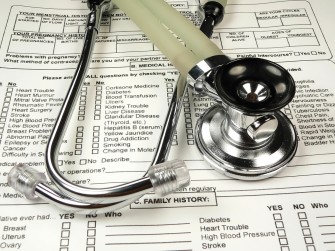 Research has shown that 6 out of every 10 adults in the UK have a raised cholesterol. The only way to know if you have a raised cholesterol is to have a non-fasting blood or finger-prick test. In order to understand the risk that cholesterol poses to your health it is important to know your numbers and what they mean.
Research has shown that 6 out of every 10 adults in the UK have a raised cholesterol. The only way to know if you have a raised cholesterol is to have a non-fasting blood or finger-prick test. In order to understand the risk that cholesterol poses to your health it is important to know your numbers and what they mean.
What cholesterol results should you expect?
- Total Cholesterol (TC) – the total amount of cholesterol in your blood – ideally 5 mmol/L or less.
- Non HDL Cholesterol – total cholesterol minus your HDL cholesterol and is the sum of all the “bad” cholesterols added together – ideally 4mmol/L or less.
- LDL Cholesterol – the amount of LDL cholesterol or “bad” cholesterol – ideally 3 mmol/L or less.
- HDL Cholesterol – the amount of HDL cholesterol or “good” cholesterol – ideally over 1mmol/L (men) and over 1.2mmol/L (women).
- TC:HDL ratio – This is the TC figure divided by the HDL-C figure. A ratio over 6 is considered high risk – the lower this figure is the better.
How often should cholesterol be tested?
- Every 5 years if you are between the ages of 40 and 75
- Every 12 months if you are on cholesterol lowering medication
What increases your risk of high cholesterol?
- If you have been diagnosed with coronary heart disease, stroke or mini-stroke (TIA) or peripheral arterial disease (PAD)
- family history of cardiovascular disease
- being overweight or obese
- having high blood pressure or diabetes
Information from:
http://www.nhs.uk/Conditions/Cholesterol/Pages/Diagnosis.aspx








Thank you for providing such a comprehensive and practical guide. Your blog has become a valuable resource for me, and I’m sure it will help many others on their journey to better manage High cholesterol. Looking forward to more insightful content from you.